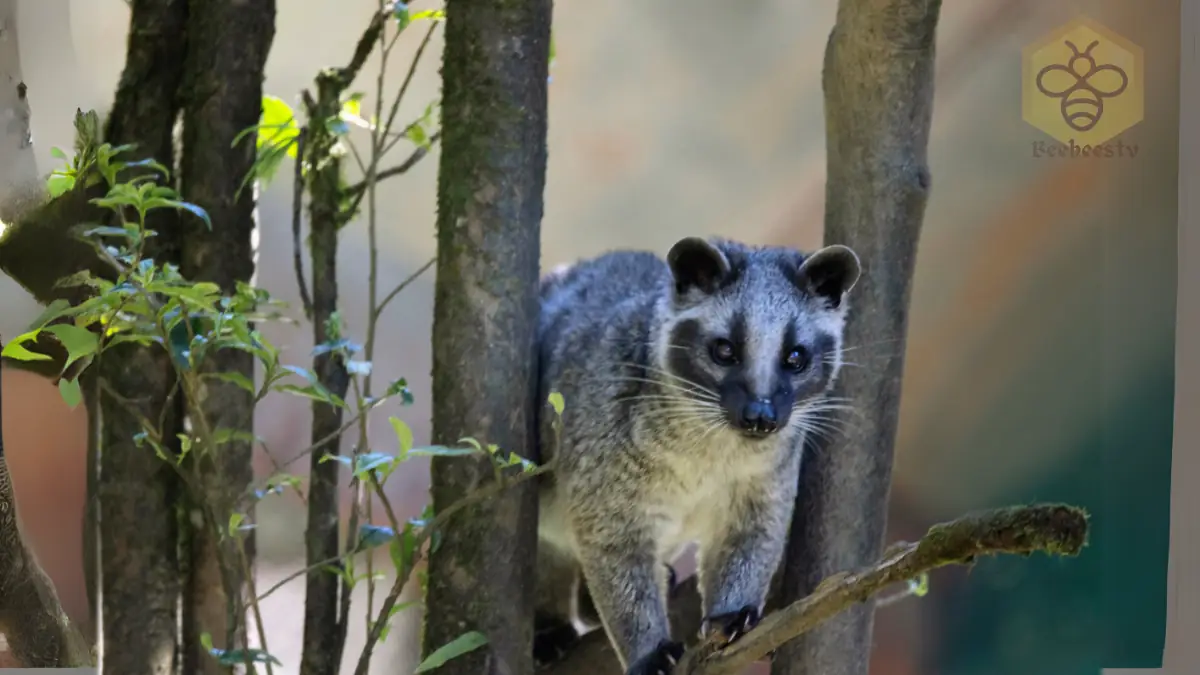Asian Palm Civet: The Coffee-Infamous Night Dweller
Asian Palm Civet
Introduction
The Asian Palm Civet, a nocturnal creature native to South and Southeast Asia, is known for its role in creating kopi luwak, one of the most expensive types of coffee in the world. While these animals are primarily recognized for their involvement in coffee production, they play a larger ecological role as seed dispersers and insect controllers. With unique habits and adaptations, the Asian Palm Civet is a fascinating animal that captures the curiosity of those who encounter it.
Scientific Overview
Scientific Name
The scientific name of the Asian Palm Civet is Paradoxurus hermaphroditus.
Common Name
It is commonly referred to as the Asian Palm Civet, Toddy Cat, or simply the Palm Civet.
Scientific Classification
Types of Palm Civets
The term “civet” is used to describe several related species within the Viverridae family. The Asian Palm Civet, however, is unique in its adaptation to forested and urban environments across its range.
Habitat and Distribution
The Asian Palm Civet is widely distributed across South and Southeast Asia, with populations found in India, Sri Lanka, Nepal, Myanmar, Thailand, and the Indonesian islands. These animals thrive in tropical rainforests, deciduous forests, and even urban environments where they may be spotted in fruit trees and gardens. They are highly adaptable and often found near human settlements where food sources are plentiful.
Physical Characteristics
Size and Weight
They are medium-sized mammals:
- Length: They typically measure between 20-30 inches, not including the tail.
- Weight: They weigh between 3-10 pounds, with males being slightly larger than females.
Appearance
The Asian Palm Civet has a slender, cat-like body with a pointed face, large eyes, and a long tail. Its coat is usually grayish-brown with dark spots and stripes on its body and a distinct black mask around its eyes. This patterning serves as camouflage in the dense forests and underbrush of its natural habitat.
Diet and Feeding Habits
The Asian Palm Civet is an omnivore, with a diet that includes fruits, berries, small mammals, insects, and even nectar. Known for its preference for ripe coffee cherries, it plays a role in producing kopi luwak coffee by consuming the cherries and passing the seeds, which are collected, cleaned, and processed. Aside from coffee, these animals consume a variety of fruits, which aids in seed dispersal and promotes forest growth.
Behavior and Lifestyle
Asian Palm Civets are primarily solitary and nocturnal. They are most active at night, using their sharp senses of smell and sight to navigate and forage in the darkness. During the day, they rest in trees or burrows, often taking shelter in dense foliage or abandoned structures. They are territorial and use scent markings to communicate with other civets in the area.
Reproduction, Babies, and Lifespan
Asian Palm Civets breed throughout the year, and females can have up to two litters annually. After a gestation period of approximately 60 days, females give birth to litters of 1-4 young. The mother cares for the young alone, providing protection and food until they are weaned and capable of foraging independently. In the wild, They live around 15-20 years, with some individuals reaching slightly older ages in captivity.
Population and Conservation Status
The Asian Palm Civet is classified as a species of “Least Concern” by the International Union for Conservation of Nature (IUCN), largely due to its adaptability and wide distribution. However, they face threats from habitat loss, hunting, and capture for the exotic pet trade. The demand for kopi luwak coffee has also led to the unethical practice of caging and force-feeding civets, which raises significant welfare and conservation concerns.
Role in the Ecosystem
They play a crucial role in their ecosystem. As frugivores and insectivores, they help control insect populations and aid in seed dispersal, particularly for fruit-bearing trees. Their feeding habits contribute to forest regeneration, making them vital for maintaining the health and diversity of tropical ecosystems.
FAQs About Asian Palm Civets
- What is kopi luwak, and how is the Asian Palm Civet involved?
Kopi luwak is a type of coffee made from beans that have passed through the digestive system of the Asian Palm Civet. After the civet eats the coffee cherries, the beans are collected, cleaned, and processed, creating a unique flavor. - Are Asian Palm Civets endangered?
They are currently classified as “Least Concern,” but they face threats from habitat loss, hunting, and unethical practices in the kopi luwak industry. - Do Asian Palm Civets make good pets?
Due to their wild nature, solitary behavior, and specific care needs, Asian Palm Civets do not make good pets and are best left in their natural habitat. - What do Asian Palm Civets eat?
Their diet includes fruits, small mammals, insects, and coffee cherries, among other foods, making them important for seed dispersal and insect control. - How long do Asian Palm Civets live?
They typically live 15-20 years in the wild, with some individuals reaching slightly older ages in captivity.
Conclusion
The Asian Palm Civet is a resilient and adaptable species with a unique ecological role in tropical forests and a controversial role in the coffee industry. While kopi luwak coffee has brought this nocturnal creature into the spotlight, it is essential to recognize the civet’s importance to its ecosystem and advocate for ethical treatment in all interactions with humans. With proper conservation efforts, the Asian Palm Civet can continue to thrive in the wild, playing its part in forest growth and insect control.
